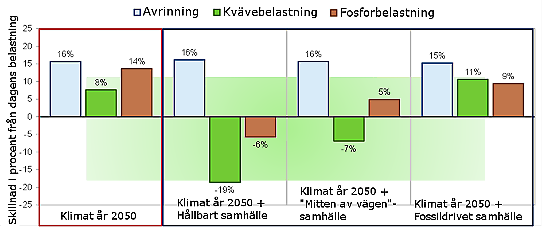Researchers from SMHI have participated in international projects involving new calculations concerning nutrient discharges from land into the Baltic Sea in order to study how changes in climate and society around the Baltic Sea could impact on the marine region. In the calculations, the researchers use the scenarios for climate impact and societal development that will form the basis for the UN’s IPCC climate panel’s next major report on climate change. These scenarios will be compared with calculations regarding the way in which climate change alone could impact on nutrient inputs into the Baltic Sea by 2050.
“It’s been surprising to see that the way in which society develops could have such an important impact on nutrient inputs into the Baltic Sea. It is clear that land use and societal change is of considerable importance,” said Alena Bartosova, researcher in hydrology at SMHI.
Societal development will have an impact
The calculations show that, with the current rapid rate of climate change, the volume of water flowing into the Baltic Sea will increase by around 16 percent by 2050, while quantities of nitrogen and phosphorous will rise by eight and 14 percent respectively. However, if researchers assume that society will become more sustainable in the future, nutrient inputs will instead fall below current levels.
If researchers perform calculations based on the assumption that society will continue to be based on fossil fuels, nitrogen inputs will increase somewhat, but the input of phosphorous into the Baltic Sea will be lower by 2050 compared with the scenario where the climate change calculations are performed without taking societal developments into consideration.
“Nutrient loads could rise significantly due to climate change. The choices we make as a society could either limit or worsen this increase. Measures which are aimed directly at nutrient sources or which impact on nutrient transport at high flow levels will have the biggest impact on nutrient inputs into the Baltic Sea. If society is managed and developed in such a way that it moves towards greater sustainability, we can limit the problem, so there is hope,” said Alena Bartosova.
The new calculations were performed using the hydrological calculation model “E-HYPE” under the international BONUS projects Soils2Sea and MIRACLE.
